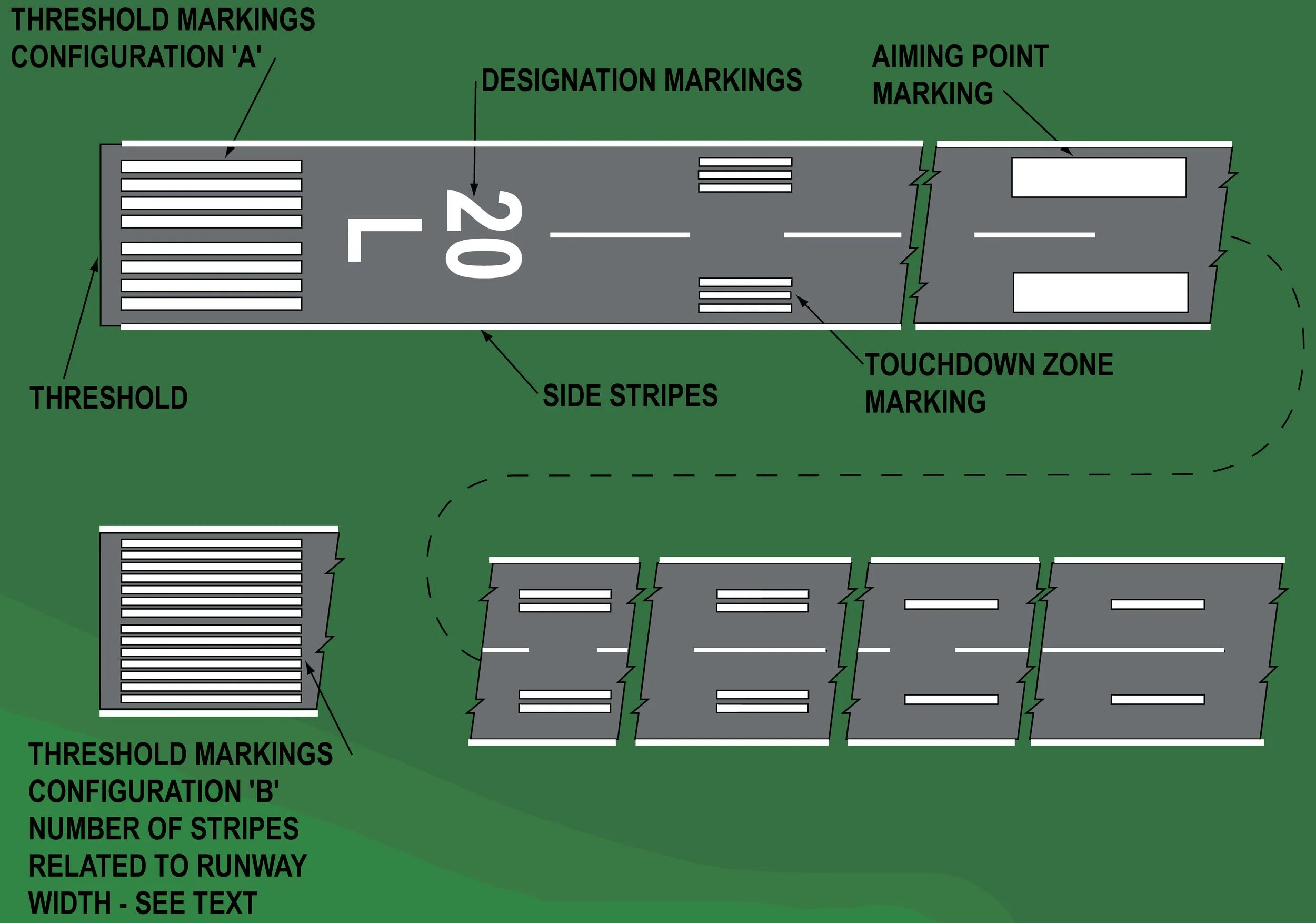Precision Instrument Runway Markings
THRESHOLD - Identifies the beginning of the portion of the runway that is available for landing. Sometimes the threshold may be relocated or displaced. Threshold markings come in two configurations. They either consist of eight longitudinal stripes of uniform dimensions disposed symmetrically about the runway centerline (configuration 'A'), or a varying number of stripes that signify the runway width (configuration 'B'). In the second configuration, 4 stripes represents a runway width of 60 feet, 6 stripes represents 75 feet, 8 stripes represents 100 feet, 12 stripes represents 150 feet, and 16 stripes represents 200 feet.
SIDE STRIPE MARKINGS - Delineate the edges of the runway. They consist of continuous white stripes located on each side of the runway and provide a visual contrast between the runway and the abutting terrain or shoulders.
SHOULDER MARKINGS - Yellow markings that may be used to supplement runway side stripes and identify pavement areas contiguous to the runway sides that are not intended for use by aircraft.
TOUCHDOWN ZONE MARKINGS - Identify the touchdown zone for landing operations and are coded to provide distance information in 500 ft (150 m) increments. These markings consist of groups of one, two, and three rectangular bars symmetrically arranged in pairs about the runway centerline. For runways having touchdown zone markings on both ends, those pairs of markings which extend to within 900 ft (270 m) of the midpoint between the thresholds are eliminated.

